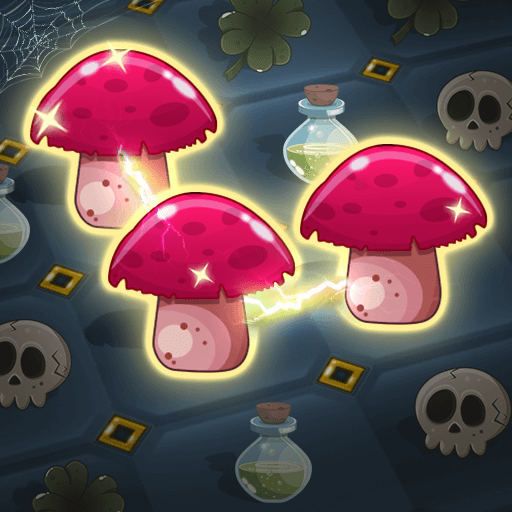Introduction
Online gaming has come a long way since the pixelated fun of browser-based Flash games. In 2025, H5 games—short for HTML5 games—are leading a quiet revolution. They’re quick, cross-platform, and seamlessly integrated into our digital lives. But how did we get here, and what does the future look like?
Let’s unpack the journey of H5 games and their rising dominance in the online gaming world.
What Are H5 Games?
Simply put, H5 games are games built using HTML5 technology. They run directly in web browsers—no downloads, no installs. Whether you’re using Chrome on a laptop or Safari on your iPhone, you can dive right in.
Key Features:
Instant play (no loading screens of doom!)
Cross-platform compatibility
Lightweight and memory-friendly
Easy sharing via links or QR codes
The Early Days: Flash to HTML5
Remember when Adobe Flash ruled the online gaming world? It was clunky, vulnerable to security threats, and didn’t work on iPhones. As mobile usage skyrocketed, the web needed something better. Enter HTML5.
By 2017, major browsers began phasing out Flash. Developers migrated to HTML5, bringing better performance, graphics, and accessibility.
Why H5 Games Took Off
The magic of H5 games lies in their accessibility and convenience. With internet speeds improving and smartphones everywhere, people wanted quick, casual entertainment without the friction.
Other drivers:
No app store approvals
Viral potential through social sharing
Light on device resources
Ad-friendly formats
H5 vs. Native Games
Let’s break it down:
Feature H5 Games Native Games
Download Required ❌ ✅
Cross-platform ✅ ❌ (usually OS-specific)
Monetization Flexibility ✅ ✅
Performance Medium High
Development Time Shorter Longer
Native games still dominate AAA titles, but for casual gamers? H5 wins in 2025.
Key Milestones in H5 Game Development
2010-2012: HTML5 matures as a viable game development tool.
2016: Facebook Instant Games brings H5 to Messenger.
2020: Mini-program games boom in WeChat and similar apps.
2023: TikTok integrates H5 games natively.
2025: H5 engines like Egret, Cocos Creator, and Phaser 4 support near-native performance.
The Rise of Social and Casual Gaming
H5 games thrive on social platforms. Whether it's a match-three puzzle or a trivia challenge, these games are made to be shared. Players can challenge friends directly via a chat app, and the game loads in seconds.
Platforms like:
Facebook Instant Games
WeChat Mini Games
TikTok Mini-Apps
WhatsApp H5 integrations
These helped push H5 into the mainstream.
H5 Games in Messaging Apps
Imagine chatting with a friend and jumping into a co-op game without leaving the app. That’s the power of H5 games within messaging platforms.
By 2025, this is common on:
Telegram
Snapchat
Discord
Line
It’s social, seamless, and super engaging.
Mobile Browsers: A Playground for H5
Mobile browsers today are supercharged. Thanks to tech like WebGL and WebAssembly, H5 games can now offer:
Smooth 60FPS animations
3D graphics
Multiplayer features
Local storage for saving progress
Your browser is basically your new console.
Global Trends in Online Gaming (2020–2025)
Some key shifts:
Cloud gaming is now mainstream.
Subscription models are growing (think Netflix for games).
Casual gaming audiences outnumber hardcore ones.
Short-form games (under 5 minutes per session) dominate mobile.
H5 fits all of these trends perfectly.
Cross-Platform Play: One Game, Many Devices
In 2025, most successful H5 titles support cross-play:
Play on your phone, continue on your laptop.
No syncing, no separate installs.
This flexibility is reshaping how players interact with games—fluid and frictionless.
The Role of Cloud Gaming
H5 and cloud gaming are a match made in heaven. No need to install 10GB of data. Just stream and go.
Hybrid models are emerging too:
H5 frontends with cloud-rendered backends
Ultra-fast load times with native-level graphics
WebAssembly & Performance Boosts
WebAssembly (WASM) allows code written in languages like C++ or Rust to run blazingly fast in the browser. This has taken H5 games from “fun little time-wasters” to serious contenders.
Developers now build 3D shooters, strategy games, even MMOs using H5 + WASM.
Monetization Models in 2025
Forget basic banner ads. Here’s how devs are cashing in:
Rewarded ads: Watch to unlock a power-up
In-game purchases: Skins, boosters, passes
Subscriptions: VIP access and exclusive games
Branded content: Integrated advertising with gameplay
H5 games are profitable and scalable.
Gamification Beyond Entertainment
H5 games aren’t just for fun. In 2025, they’re used in:
Education (interactive quizzes, learning games)
Healthcare (rehab exercises turned into games)
Marketing (branded mini-games)
Corporate training (soft-skill development)
Gamification is everywhere—and H5 is the easiest delivery method.
Top Genres in H5 and Online Games Today
Hyper-casual (tap-and-play)
Puzzle & Trivia
Idle/clicker games
Multiplayer arena (MOBA-lite)
Turn-based RPGs
Interactive story games
Each genre is evolving within the H5 space, with richer narratives and better graphics.
H5 Game Development Ecosystem in 2025
The toolkits are now world-class:
Engines: Cocos Creator, Phaser, Construct, Unity with WebGL
APIs: WebXR for AR/VR, WebSockets for multiplayer
Platforms: Google Play Instant, Snap Minis, TikTok Games
And best of all, devs can push updates instantly—no app store gatekeepers.
Case Studies: Successful H5 Titles
“Words With Buds” – A viral word game with TikTok sharing integration
“Coin Clash” – A social casino hit in messaging apps
“Pixel Raiders” – A 3D shooter built entirely with WebGL + WASM
“Idle Empire” – Scaled from 10K to 10M DAU without ever entering an app store
Security & Privacy in Web-Based Games
As H5 gains traction, so do concerns around data:
Encrypted local storage is now standard.
OAuth-based logins reduce password risk.
GDPR and CCPA compliance built-in from day one.
Security is not an afterthought anymore—it’s a feature.
What the Future Holds for Online and H5 Gaming
Looking forward, we see:
AI-powered NPCs and procedural content
Mixed Reality H5 games via WebXR
Decentralized identity and ownership with blockchain
Voice-controlled gaming
Integration with smart home devices
The boundaries between web and native are blurring fast.
Conclusion
The world of H5 and online gaming has evolved rapidly, and 2025 marks a turning point. What started as a niche space for quick games is now a thriving, innovative ecosystem powering everything from social fun to professional training.
As devices get faster, browsers more powerful, and users more mobile than ever, one thing is clear: H5 games are here to stay—and they’re just getting started.
5 Unique FAQs
Q1: Can H5 games really replace native mobile apps?
A: For casual and mid-core games—absolutely. For high-end AAA games, native still holds the edge, but the gap is narrowing thanks to WebAssembly and cloud gaming.
Q2: How do H5 games make money?
A: Through a mix of in-game purchases, ad revenue, subscription models, and even sponsorships. They’re surprisingly lucrative when executed well.
Q3: Are H5 games safe to play?
A: Yes, especially when served from trusted sources. Modern H5 games follow strict security standards, including HTTPS and encrypted storage.
Q4: What tools do I need to develop an H5 game?
A: You can start with free tools like Phaser or Construct. For more advanced development, Unity (with WebGL export) or Cocos Creator are top choices in 2025.
Q5: Can I play H5 games offline?
A: Some support offline play via browser caching, but many require an internet connection—especially multiplayer or ad-monetized games.





































































































































